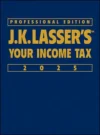Tax Refunds: Four Steps to Take
Tax refunds are paid to you by Uncle Sam when you’ve overpaid your tax bill or when you are entitled to amounts in excess of your tax bill because of the earned income credit or other refundable tax credits. Here are four actions you can take regarding tax refunds.
1. How to get refunds in the fastest way
If you’re owed a refund, you can receive it in the quickest, safest way by e-filing your return and directing the government to directly deposit your refund into an IRS-approved type of account. Refunds that are made through direct deposit to your account can be expected within 8-10 days if the return has been e-filed.
If you file a paper return by mail, you can still have the refund deposited directly into your account; this typically takes a couple of weeks. If you file a paper return by mail and want the refund mailed to you, you’ll usually have to wait 3 to 6 weeks for a refund check. If you file your return on or before April 15 and you receive the refund check more than 45 days after May 31, 2010, the IRS will pay interest on the refund.
If you want to receive a check by mail, be sure that the IRS has your correct address. The check will be sent to the address on your tax return. If you move and want the check mailed directly to the new address, be sure to inform the IRS. Use Form 8822, Change of Address, for this purpose.
2. Where to direct your tax refund
You can, of course, have the IRS send a tax refund to you by mail or deposit it directly into your bank account. But you now have a number of options on using your refund in another way. You can have some or all of the refund applied to:
- Pay estimated taxes. For example, you can have your 2009 tax refund used to pay your 2010 estimated taxes. To do this, merely complete line
- Make a contribution to your IRA, health savings account, or Coverdell education savings account.
- Purchase U.S. Savings bonds, series I. Your refund goes into a TreasuryDirect online account to buy the bonds. The purchase must be made in multiples of $50, with the total purchase limited to $5,000. If your refund is greater than this amount, you’ll have to make other plans for the excess.
If you want to split your deposit into two or more approved accounts, you’ll need to complete Form 8888, Direct Deposit of Refunds to More than One Account, and provide the required account information.
3. Why and how to avoid a refund
Some taxpayers celebrate the fact that they receive a refund and use the refund for a vacation or other purpose. But other than the fact that a large refund is a form of forced savings, it probably isn’t a good idea. Receiving a refund means you’ve made an interest-free loan to the government. If you’d more closely figured your tax bill and reflected this in wage withholding and estimated tax payments, you could have enjoyed your money throughout the year.
To make sure your tax payments more closely match your tax liability, monitor your income and expenses for the year. You can then make adjustments as follows:
- Wage withholding: File a new W-4 form with your employer to increase withholding allowance so you’ll have less withheld from your paycheck.
- Estimated taxes: Reduce your remaining estimated tax installments.
4. How to track a refund
Like tracking packages sent by FedEx and other carriers, you can track a tax refund. This can be done online using the IRS’s “Where’s My Refund” page on www.irs.gov or you can call the IRS Refund Hotline at 800-829-1954. If you’ve e-filed your return, tracking information on the IRS website is available within a couple of days of filing. For paper returns filed by mail, you must wait several weeks before you can track a refund.
Holding period
The length of time that an asset is owned and that generally determines long- or short-term capital gain treatment.



